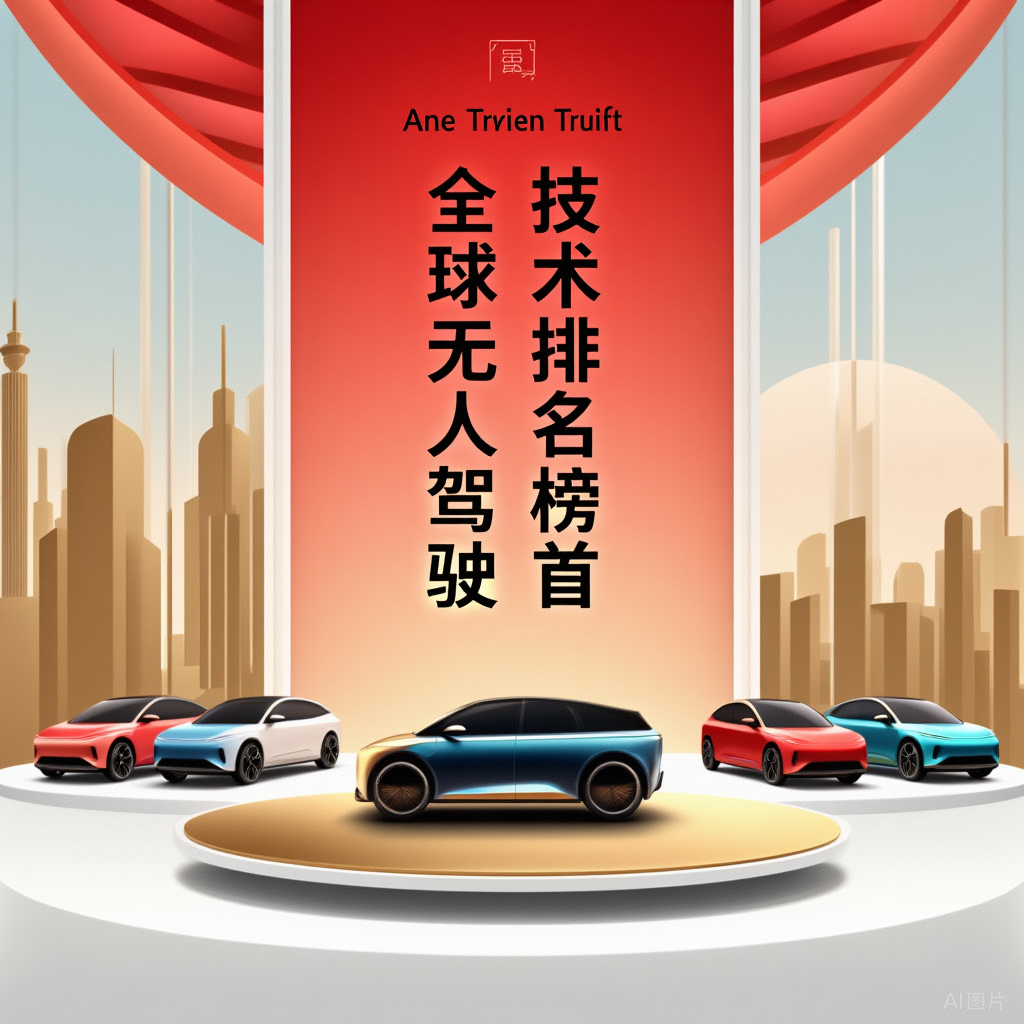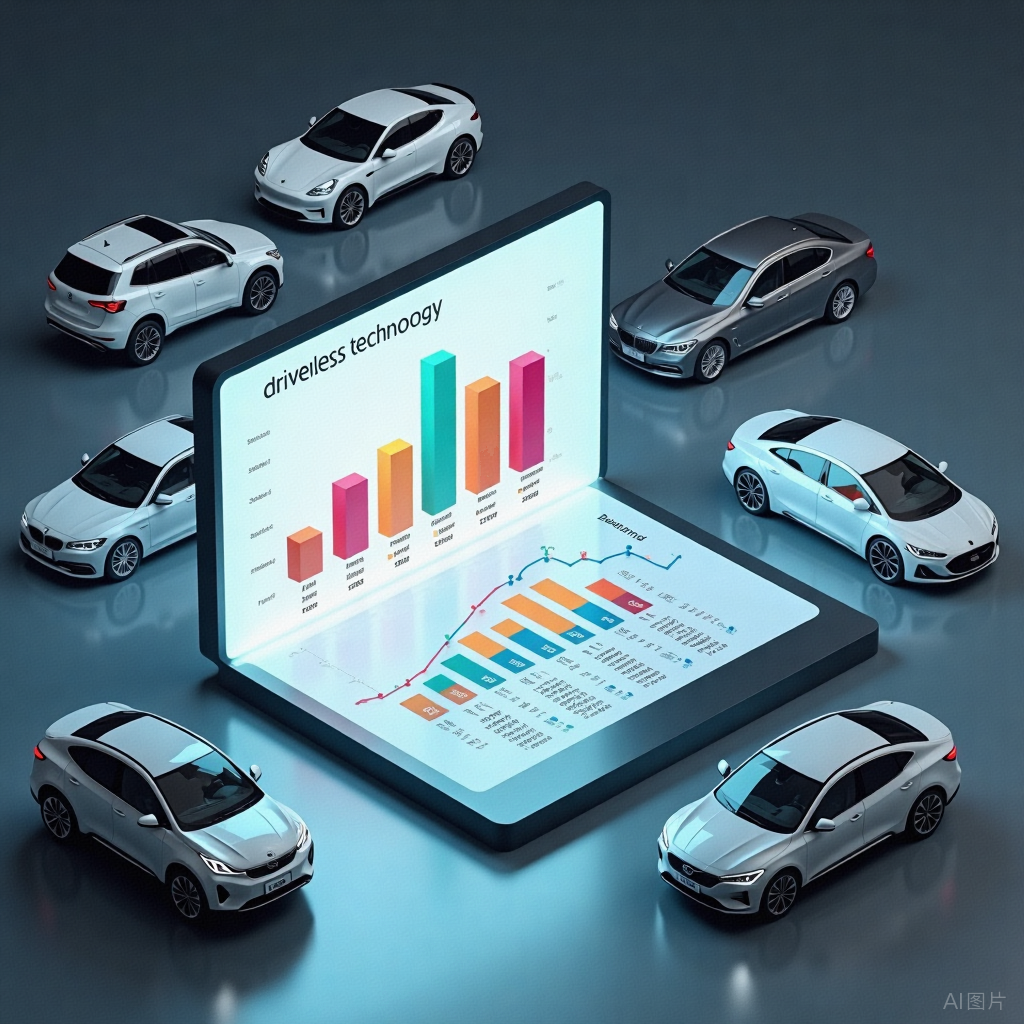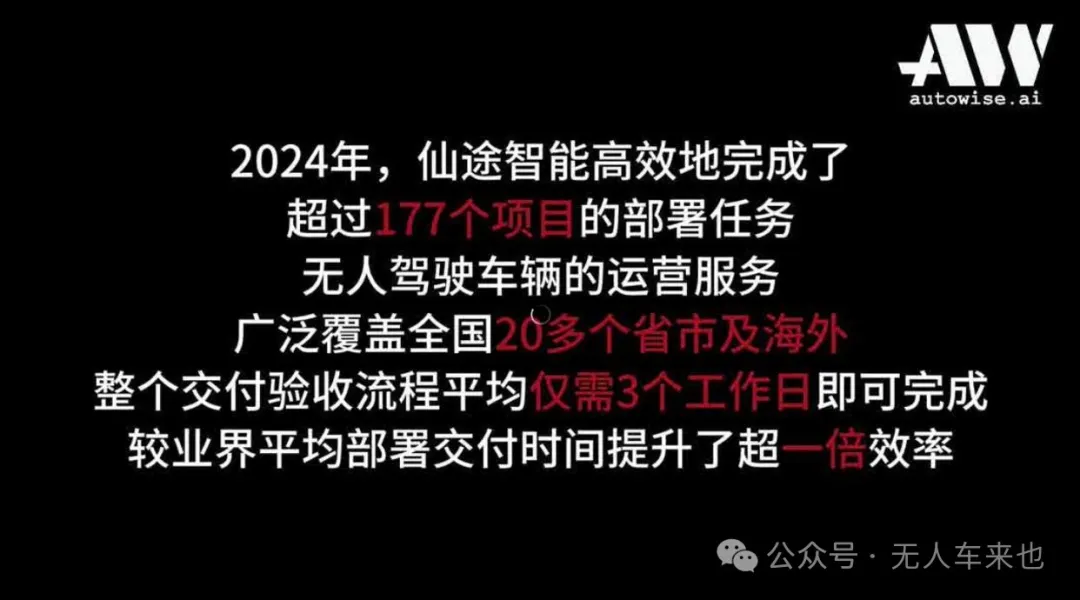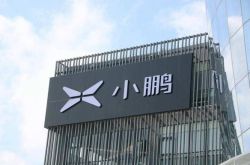Global Autonomous Driving Technology Rankings: Leaders in Each Sub-sector
![]() 05/07 2025
05/07 2025
![]() 520
520
Introduction
By 2025, roads will no longer be the exclusive domain of human drivers. Autonomous taxis in Beijing, Shanghai, Guangzhou, and Shenzhen are overwhelmed with ride requests, autonomous delivery vehicles navigate residential communities, autonomous mining trucks operate around the clock in China's Gobi Desert, and autonomous sanitation vehicles quietly sweep streets at 3 AM. This technological revolution is silently reshaping the global transportation landscape. Today, Autonomous Driving News (public account: Autonomous Driving News) delves into the data to reveal who leads in each sub-sector! (For related reading, please click: "China Leads the Global Autonomous Driving Delivery Trend: With giants like Meituan, JD.com, SF Express, Alibaba, ZTO Express, and tech companies like Neolith, Horizon Robotics, and White Rhino")

I. Autonomous Driving Taxis: A Clash of Titans Between China and the US
1. Waymo: The Undisputed Leader
As the offspring of Google's parent company Alphabet, Waymo is the trailblazer in autonomous taxi technology. Leveraging Google's vast data resources and cutting-edge algorithmic technology, Waymo embarked on its autonomous driving journey as early as 2009. In places like Phoenix, USA, Waymo's autonomous taxis have achieved large-scale commercial operations, completing 250,000 autonomous rides per week—equivalent to the combined populations of San Francisco, Phoenix, and Austin, with 35,000 people opting for "driverless" travel daily. Undoubtedly, Waymo currently leads the global market.
2. Baidu Apollo Go: China's Rising Star
In China, Baidu Apollo Go is undeniably a force to be reckoned with. Relying on Baidu's powerful AI technology and precise mapping resources, Apollo Go has risen rapidly. In Wuhan, after deploying 400 vehicles, the peak daily order volume per vehicle exceeded 20 orders, with the total number of orders nationwide surpassing 10 million and the testing mileage exceeding 150 million kilometers. Apollo Go's practical operating model, featuring fixed pick-up points and affordable prices compared to ordinary online car-hailing services, has successfully garnered a loyal following.
3. Pony.ai: A Technological Innovator
Pony.ai adheres to a "technological stream" approach, with a fully self-developed L4 autonomous driving system and expertise in multi-sensor fusion technology. In Guangzhou, Beijing, China, and California, USA, Pony.ai's fleet can be seen shuttling around, with a cumulative testing mileage exceeding 20 million kilometers. From 2025 to 2026, Pony.ai plans to collaborate with Toyota to deploy thousands of Pony Alpha 4X Robotaxi vehicles in China's first-tier cities, produced by the GAC Toyota New Energy production line, marking a new era of large-scale commercialization.
4. WeRide: License Acquisition Speedster, Yet to Scale in China
WeRide is the only company globally with licenses in China, the United States, France, the United Arab Emirates, and other countries, offering rides for $30 each in the Middle East.
5. Cruise: GM's Struggling Son
Cruise, a subsidiary of GM, faced significant scrutiny from the California DMV for "fraud," after being caught turning off headlights during nighttime testing to avoid supervision. Unfortunately, since a car accident in 2023, Cruise has stumbled, and GM completely halted its autonomous driving business earlier this year. A once powerful figure, now fallen!
Tesla, XPeng, Huawei, and others, strictly speaking, are capable only of assisted driving or autonomous driving within L3, which is still far from true autonomous driving, hence their exclusion from this discussion.
II. Autonomous Driving Logistics Delivery Vehicles: Chinese Contingent's "Cost Revolution"
1. Neolix: The Urban Delivery Innovator
Neolix has delivered over 3,000 autonomous vehicles in 13 countries and 100 cities worldwide, with a daily average delivery volume exceeding 200,000 orders. Its "automotive-grade + modular" design has reduced the cost of a single vehicle from hundreds of thousands of yuan five years ago to 50,000 yuan or less, just one-third of the cost of Starship Technologies' vehicles. Moreover, Neolix has partnered with Meituan and Ele.me to launch a "unmanned vehicle + drone" combined transportation network, achieving "15-minute delivery within 3 kilometers" in Shenzhen with delivery costs 60% lower than manual delivery. In April 2025, Neolix completed the construction of China's first "unmanned delivery robot manufacturing factory" in Wuhou District, Chengdu, with an annual production capacity of 100,000 vehicles, aiming to cover 80% of China's county-level markets within three years.
2. Jiushi Intelligence: A Dark Horse Solving the "Logistics Manpower Shortage"
Jiushi Intelligence's L4 autonomous delivery vehicles have been deployed in 29 provinces nationwide, with a cumulative number of orders exceeding 300 million. Addressing the issue of weak GPS signals on rural roads, Jiushi's developed "Footprint coordinate system + Maptr model" can generate reference line trajectories in real-time, achieving a 98% on-time delivery rate in mountainous areas of Yunnan. Its distributed simulation platform can "verify 6 months of operating conditions per hour," improving algorithm iteration efficiency by 2,000 times, supporting "one algorithm running nationwide." Jiushi's unmanned vehicle + Tmall Auto Care is a divine combination, setting a "new benchmark" for unmanned vehicle maintenance services.

3. Nuro: The US "Innovation Pioneer"
Nuro specializes in low-speed delivery, with a unique vehicle design lacking a driver's cabin, using all space for cargo. Partnering with retail giants like Walmart and 7-Eleven, Nuro delivers goods to residents' doorsteps in Arizona and Texas, USA. Despite its slow speed (a maximum of 40 km/h), it is extremely safe, with a body made of soft materials that can automatically avoid pedestrians. Currently, Nuro has accumulated over 3 million miles of driving, occupying a prominent position in the US autonomous driving delivery field.
III. Autonomous Driving Mining Trucks: "Money-Making Machines" in Mines
1. Caterpillar (USA)
Founded in 1925, Caterpillar Inc., headquartered in Illinois, USA, is a leading global construction machinery enterprise. As early as the 1980s, Caterpillar began research and development on autonomous dump trucks for mining. In 1996, Caterpillar officially launched automated mining dump trucks and demonstrated autonomous driving at the MINExpo exhibition. In 2013, Caterpillar's CAT®MineStarTM autonomous driving system began commercial use, initially equipping 6 autonomous mining trucks. In November 2023, Caterpillar's autonomous hauling system officially entered commercial use, marking ten years of operation. Currently, it supports over 620 autonomous trucks operated by 15 customers across Australia, South America, and North America, covering a variety of minerals.
2. Komatsu (Japan)
Founded in 1921, Komatsu Ltd. (Komatsu Group), with a history of 104 years and headquarters in Tokyo, Japan, is one of the world's largest construction machinery and mining machinery manufacturing enterprises. In 2005, Komatsu conducted trials of its autonomous hauling system at a copper mine in Chile. In 2008, Komatsu's autonomous mining trucks achieved commercial deployment for the first time at a copper mine in Chile. Since then, Komatsu has ventured further into the field of autonomous driving, becoming a leader in the global autonomous mining truck sector. In September 2017, Komatsu successfully completed the trial operation of a standard dump truck retrofitted with an autonomous hauling system kit. In 2024, over 750 Komatsu autonomous hauling trucks are operating robustly in various mining areas worldwide, not only marking the widespread adoption of autonomous driving technology in the mining sector but also setting a new benchmark for industry development with a cumulative transportation volume exceeding 10 billion metric tons.
3. Easygo Intelligence: Domestic Mining Truck Leader
In China's open-pit coal mines, Easygo Intelligence's autonomous mining truck fleet exhibits a powerful presence. These mining trucks, with a load capacity exceeding 100 tons, navigate complex slopes and curves in mining areas with ease. Through 5G + vehicle-road coordination technology, they achieve automatic queuing, precise loading and unloading, with efficiency 20% higher and costs 15% lower than manual driving. Currently, Easygo Intelligence has deployed over 1,000 autonomous mining trucks, with a cumulative driving distance exceeding 50 million kilometers, firmly ranking first in the industry.
4. WeRide.ai
In 2017, renowned entrepreneurship mentor Professor Li Zexiang led a team to establish WeRide.ai. As an early investor in DJI and the mentor of its chairman, Professor Li earned the title of the "Godfather of DJI." As of September 30, 2024, WeRide.ai has delivered 123 autonomous mining trucks and received indicative orders for 320 autonomous mining trucks and 206 independent autonomous truck systems. At the end of April 2025, WeRide.ai won a large order worth 2.1 billion yuan, agreeing to deliver 7,500 high-end customized heavy-duty trucks for the Saudi Arabian and Qatari markets.
IV. Autonomous Driving Sanitation Vehicles: A "Cost Revolution" by Chinese Enterprises
While Europe and the US are still grappling with road rights, Chinese sanitation vehicles have conquered 340 cities:
1. Neolix
Neolix leads the issuance of autonomous driving licenses in Shanghai, Beijing, Hangzhou, Suzhou, Changsha, Hefei, and Wuxi, empowering over 30 cities globally with L4 autonomous driving technology. Neolix was the first to obtain Shanghai's first autonomous equipment identification tag, Hangzhou's first autonomous sanitation testing license, Suzhou's first batch of autonomous demonstration operation licenses, Wuxi's first batch of commercial intelligent connected vehicle licenses, Changsha's first batch of functional unmanned vehicle road travel codes, and Hefei's first batch of intelligent connected vehicle development road test licenses. Neolix has successfully landed in diverse scenarios such as municipal roads, airports and ports, factory parks, and tourist attractions, achieving full coverage of open, semi-closed, and closed outdoor scenarios, and establishing a global commercial presence.

2. Yutong Environmental Sanitation + WeRide
Recently, Yutong Environmental Sanitation collaborated with WeRide to jointly create and deliver 50 pure electric autonomous sweeper trucks. This innovative creation marks the birth of China's first fully pre-installed mass-produced fully autonomous sanitation vehicle (Robosweeper) and heralds a new chapter in the comprehensive open-road testing in Nansha District, Guangzhou. Currently, Yutong Environmental Sanitation has developed multiple product categories and wire-controlled vehicle solutions, including 6t sweeper trucks, 6t washing trucks, and 18t sweeper trucks. The first mass-produced 6t autonomous sweeper truck is already in full-automatic operation on Guangzhou Bio-Island.
3. Coolway Technology
Coolway Technology is dedicated to providing the industry with full-stack autonomous driving solutions for urban scenarios. It has launched three major series of products for unmanned sanitation scenarios: Unicorn, Kirin, and Hulk, with the Hulk series mainly comprising unmanned sanitation vehicles of 18 tons or more. Currently, Coolway Technology independently undertakes road cleaning and sanitation projects in multiple cities, deploying unmanned sanitation vehicles including multiple heavy-duty unmanned water sprinklers and unmanned sweeper trucks. For example, in the Yongchuan District smart city management service project won earlier this year, 11 unmanned sanitation vehicles were put into use, including 1 18T intelligent new energy sweeper truck and 2 18T intelligent new energy water sprinklers.
V. Autonomous Driving Sightseeing Vehicles: A "Cost Revolution" by Chinese Enterprises
1. Yokee - G14
Launched by Shangyuan Zhixing Technology Co., Ltd., the Yokee - G14 boasts a super-large capacity of 5 rows and 14 seats, with a minimalist black and white color scheme, coupled with lidar and smart cameras, giving it a futuristic feel. The vehicle can reach a maximum speed of 30 km/h and has a driving range of 100 km on a single charge. It features three driving modes: on-board, remote control, and remote parallel driving. Its cloud control platform is a major highlight, allowing tourists to complete tasks such as automatic order receipt, autonomous driving, and automatic arrival at the destination by scanning a QR code.
2. Hankes Robobus
Created by Guizhou Hankes PIX Moving, the Hankes Robobus has a load capacity of 6 people and L4 autonomous driving capability. It has no front or rear, lacks traditional automotive components such as steering wheels, pedals, and rearview mirrors, and is mainly used in 3 to 5 km urban terminal transportation microcirculation scenarios, as well as enclosed scenarios such as scenic spots, parks, airports, and industrial parks. For example, Shenzhen Lianhua Mountain Park and Guangzhou Baiyun Mountain Park have introduced this sightseeing vehicle to provide free experiences for citizens and tourists.
3. UISEE Technology: Leveraging the U-Drive® intelligent driving system, UISEE Technology specializes in crafting vehicles tailored for public transportation applications, such as airport shuttles, that are equally adept in tourist attractions and other settings. Incorporating L4 autonomous driving technology, these vehicles feature advanced capabilities like autonomous navigation and obstacle avoidance, enabling seamless autonomous operations regardless of weather conditions.
4. CH Auto "Blue Whale": This L4 autonomous driving sightseeing vehicle boasts a sleek, rounded design with futuristic lines, embodying a strong sense of technology and modernity. Designed to cater to the commuting and sightseeing needs of clients in industrial parks, scenic spots, and beyond, it offers a maximum speed of 30 km/h, a driving range of 160 km, and a maximum gradeability of 15%. The vehicle is equipped with a trio of fixed seats at the front and rear, complemented by two foldable seats on the left, accommodating a total of 8 passengers with a load capacity of 14 people.
5. Zhongke Zhichi "Xiaoma Pro": Tailored specifically for scenic spots, theme parks, airports, large communities, and other scenarios, the "Xiaoma Pro" is the industry's first mass-producible autonomous driving sightseeing vehicle with a dedicated chassis. Equipped with the latest version of the self-developed autonomous driving system APOV7.0, it boasts L4 intelligent driving capabilities and is the first of its kind to integrate a self-developed BEV intelligent driving large model. Featuring a "square box" design with front and rear symmetry, it also includes a large central control screen and an advanced human-machine interaction system, enhancing its technological and stylish appeal. Retaining manual driving functions while integrating multiple cutting-edge autonomous driving technologies and components, it enables autonomous navigation and obstacle avoidance.
6. QCraft
As the driverless minibus roams freely by Jinhua Lake, QCraft, freshly infused with a $100 million funding, is bringing autonomous driving to life.
Currently, QCraft's Dragon Boat series of autonomous vehicles are operational in multiple Chinese cities, spanning applications like urban public transportation and online ride-hailing.
For instance, at Jinhua's Jinyi Lake, the Dragon Boat SPACE minibus has provided nearly 5,000 passenger rides, becoming a mobile technological emblem of the city.
In Suzhou High-Speed Rail New City, QCraft's driverless minibus has conducted trial operations across various autonomous driving scenarios.
At the Shanghai Auto Show, QCraft unveiled an end-to-end urban NOA solution powered by a single Journey 6M chip, offering the industry a glimpse into the future of intelligent driving.
In summary, Wurenchelai (official account: Wurenchelai) believes that:
In the realm of autonomous driving, there is no eternal champion, only ever-evolving technology. From Baidu's "localized domination" with its robotaxi service to Jiushi Intelligence's "cost leadership" and Caterpillar's "steel behemoth," various powerhouses are fiercely competing in niche markets. However, the true victors will undoubtedly be those enterprises that seamlessly integrate technology, commercialization, and the ecological chain.
Autonomous driving in 2025 marks not the end, but the beginning – in the future, we may witness these "AI drivers" in an ever-increasing number of scenarios.
Dear readers, what do you think?





